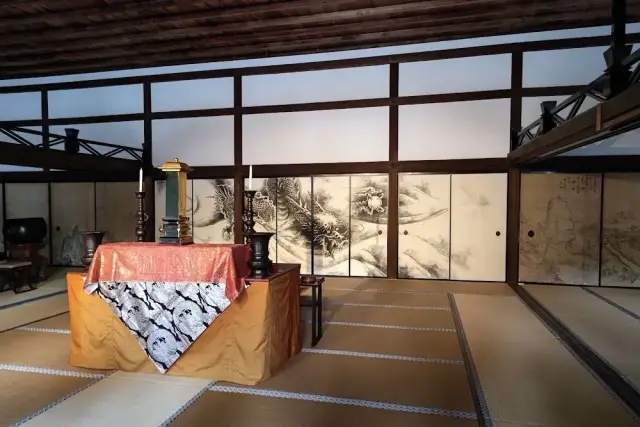https://www.dekitabi.com/itinerary/kinkakuji-daitokuji-surroundings-tour
Kyoto, the ancient capital of Japan, is renowned for its breathtaking temples and shrines that offer glimpses into the country’s rich cultural and spiritual heritage. Among these, Ryoan-ji, Kinkaku-ji, Kitano Tenmangu, and Daitoku-ji stand out as some of the most iconic and revered sites. Each of these destinations boasts unique features that make them essential stops for anyone exploring Kyoto’s historical landscape.
Ryoan-ji Temple: The Enigmatic Zen Garden

https://www.dekitabi.com/attraction/ryoan-ji
Ryoan-ji Temple, a UNESCO World Heritage Site, is famed for its minimalist rock garden that has captivated visitors for centuries. The temple’s Zen garden, dating back to the late 15th century, features 15 rocks set amidst meticulously raked gravel. This simple yet profound arrangement encourages contemplation and meditation, reflecting the essence of Zen Buddhism. The garden’s layout is designed in such a way that visitors can only see 14 rocks at a time, with the 15th always hidden from view. This design invites deeper reflection on the nature of perception and understanding.
In addition to its famous rock garden, Ryoan-ji is surrounded by serene landscapes, including a beautiful pond and lush gardens that change with the seasons. The temple’s architecture and gardens provide a peaceful retreat from the bustle of city life, making it an ideal destination for those seeking tranquility and insight.
Kinkaku-ji Temple: The Golden Pavilion

https://www.dekitabi.com/attraction/kinkaku-ji
Kinkaku-ji, or the Golden Pavilion, is one of Kyoto’s most iconic landmarks. Originally constructed in 1397 as a retirement villa for Shogun Ashikaga Yoshimitsu, the temple was later converted into a Zen Buddhist temple. Its striking gold-leaf exterior shimmers against the backdrop of lush greenery and a reflective pond, creating a stunning visual that has made it one of the most photographed sites in Kyoto.
The temple’s design follows the traditional Japanese architectural style and is adorned with intricate details that showcase the opulence of the era. Visitors can stroll through the meticulously landscaped gardens that surround the pavilion, offering different perspectives of the temple’s majestic reflection in the pond. The combination of gold leaf, traditional architecture, and natural beauty makes Kinkaku-ji a must-see attraction for anyone interested in Japanese aesthetics and history.
Kitano Tenmangu Shrine: The Patron of Scholars

https://www.dekitabi.com/attraction/kitano-tenmangu-shrine
Kitano Tenmangu Shrine, dedicated to the Shinto deity Tenjin, is renowned for its association with scholars and students. The shrine is dedicated to Sugawara no Michizane, a scholar and politician who was deified as Tenjin after his death. The shrine is a popular destination for students seeking blessings for academic success and is especially busy during exam season.
The shrine’s grounds are adorned with beautiful gardens, including a well-known plum orchard that bursts into color during the plum blossom season. The annual Kitano Tenmangu Flea Market, held on the 25th of each month, is a vibrant event where visitors can browse a wide variety of antiques, crafts, and local goods. The combination of cultural significance, historical architecture, and lively market atmosphere makes Kitano Tenmangu a fascinating place to visit.
Daitoku-ji Temple: The Monastic Complex of Zen

https://www.dekitabi.com/attraction/daitokuji-temple-kyoto
Daitoku-ji Temple is a large Zen Buddhist temple complex that consists of several sub-temples, each with its own distinct character. Founded in the 14th century, Daitoku-ji is known for its contribution to the development of the Rinzai school of Zen Buddhism and its influence on Japanese tea culture. The temple complex is home to numerous important cultural assets, including exquisite gardens, traditional tea rooms, and notable artworks.
One of the highlights of Daitoku-ji is the Daisen-in sub-temple, which features a renowned Zen garden that exemplifies the principles of Zen aesthetics. The garden’s design incorporates elements of nature, such as rocks, moss, and flowing water, arranged in a way that reflects the philosophical and spiritual ideals of Zen Buddhism. Visitors to Daitoku-ji can explore the tranquil gardens, experience traditional tea ceremonies, and immerse themselves in the contemplative atmosphere of this historic temple complex.
Conclusion
Kyoto’s Ryoan-ji, Kinkaku-ji, Kitano Tenmangu, and Daitoku-ji temples each offer unique experiences that reflect the rich tapestry of Japan’s cultural and spiritual heritage. From the meditative rock gardens of Ryoan-ji to the shimmering golden facade of Kinkaku-ji, the scholarly atmosphere of Kitano Tenmangu, and the monastic tranquility of Daitoku-ji, these destinations provide a deep connection to Japan’s historical and religious traditions. Whether you are drawn to Zen gardens, historic architecture, or cultural festivals, these temples are essential stops for anyone looking to explore Kyoto’s spiritual and historical landscape.


Leave a Reply